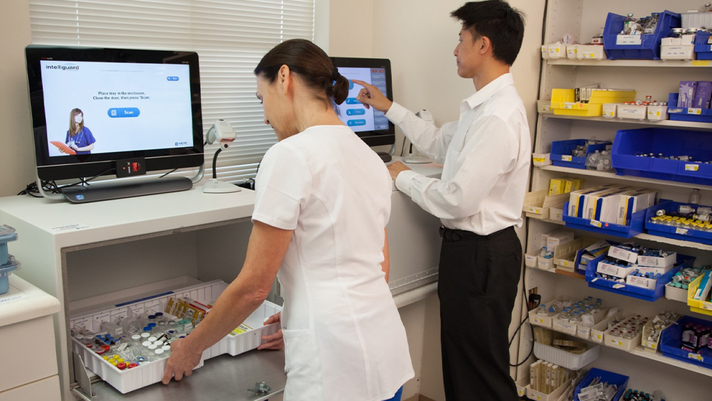
The market for radio frequency identification (RFID) solutions is growing, largely thanks to its ability to help healthcare organizations automate data capture and asset tracking across the hospital environment.1 Pharmacies are also seeing the benefits of its use. Steve Wenger, Inpatient Pharmacy Manager at Rady Children’s Hospital, said RFID-enabled medication automation coupled with pre-tagged vials direct from the manufacturer has brought remarkable value to his team by way of significant cost and workforce time savings.
Rady Children’s Hospital pharmacy has seen significant benefit from the use of manufacturer-enabled RFID pharmaceutical products like Diprivan® +RFID, a commonly used drug that has all pertinent medication data embedded within it.
The use of this has just exceeded our expectations,” said Wenger. “Traditionally, we had to manually tag everything – and that involves a lot of time and effort to encode and then verify the medication data. We were doing this every day, so I was hoping for something like this to come along.”
With Diprivan®+RFID, all the necessary product information (NDC, expiration date, lot and serial number) is directly accessible from the embedded tag on the medication label. “This is such a value to us because it not only saves us time but can also prevent information from being encoded incorrectly, which could lead to a safety issue.”
Wenger said that manufacturer-enabled RFID has been game-changing for his pharmacy, and he hopes to see more pharmaceutical companies doing this in the future. He added that if all manufacturers used a universal standard for pre-tagged products, it would help to ensure interoperability across different inventory tracking systems and platforms.
“Having products that we can use across different automatic dispensing systems is important. We need to be able to have the system do the work and read all the information we need without a problem,” said Wenger. “Think of it like a RFID-enabled grocery cart. If you had all RFID-enabled products in the grocery store, you could just pull your cart full of those products into the checkout, and it could automatically read everything you have in there and just print out a receipt. That kind of continuous reading and monitoring would be ideal for automated dispensing, so we hope to see other manufacturers do RFID-enabling for all of their medications in the future.”
The value of such RFID-enabled products and systems, Wenger stated, is clear — helping pharmacies to save valuable staff time and potential errors by avoiding manual tagging and encoding. He added that these technologies are also a boon for the hospital’s busy anesthesiologists.
“It is also saving them a lot of time,” he said. “Our anesthesiologists get a tray that has exactly what they need. They don’t have to do any barcode scanning. The RFID tag is read automatically when a medication is taken out. They don’t have to do any documentation if they put an unused vial or syringe back. Everything is integrated between our EMR and point-of-care anesthesia system so we can reconcile every medication used in a case. We’re all sold on the system we’ve put in place and our reconciliation reports are coming out much better.”
To learn more about manufacturer-enabled RFID tagging, visit www.plusrRFID.com